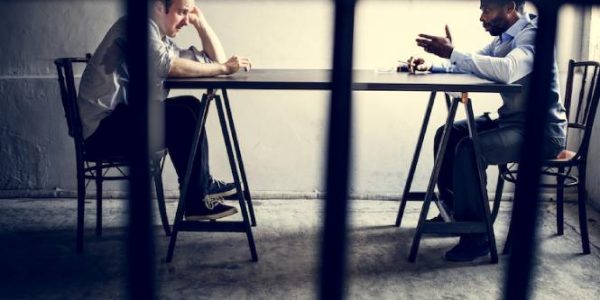What is The Meaning of “Custodial Interrogation”?
“Custodial interrogation” refers to any questioning conducted by a law enforcement officer within a fixed place of detention that is reasonably expected to provoke incriminating responses. It applies when a reasonable person in the subject’s position perceives themselves as in custody. This process begins at the point when the individual should have been informed of their constitutional rights, including the right to remain silent, the right to have legal counsel present during questioning, and the right to have counsel appointed if they cannot afford one. The custodial interrogation continues until the questioning has been fully completed.
Determining Whether an Interrogation is Custodial
When assessing whether an interrogation is custodial, courts consider various factors under a “reasonable person” standard. This standard examines whether a reasonable person in the suspect’s position would feel free to leave. If the answer is no, the suspect is deemed to be in custody, triggering their Miranda rights. The court applies a “totality of the circumstances” test, which looks at physical and psychological constraints on the suspect’s freedom.
Questioning Before Miranda Warnings
Some police officers may delay arresting suspects and questioning them without issuing Miranda warnings, believing that individuals are more likely to make voluntary statements under these conditions. If a court determines that the suspect could have left the questioning before being arrested, any statements made can be used in court, even without Miranda warnings.
Factors Considered
The court considers various factors in determining whether an interrogation was custodial:
- Setting and Presence: The presence of multiple officers, whether the officer was armed, and the location of the interrogation (e.g., police station versus a familiar environment) can increase the coerciveness of the situation. If the suspect was alone and without support from friends or family, they might feel more intimidated.
- Time and Environment: The timing and location of the questioning also matter. Interrogations on a public street during the day are less likely to be coercive than those conducted late at night on government property.
- Initiation and Freedom to Leave: If the suspect initiated the conversation or was free to leave afterwards, it is less likely to be deemed custodial.
- Officer’s Conduct: What the officer said or did during the interrogation also influences the determination. Informing the suspect that they do not need to participate in the conversation suggests a non-custodial situation. Conversely, the use of physical force, restraints, detailed questioning over an extended period, accusations, or threats increases the possibility that the interrogation was custodial.
Overall, the court’s analysis involves evaluating these factors to determine whether the suspect was in custody and entitled to Miranda warnings.
California Penal Code § 859. 5
According to California Penal Code § 859. 5, all forms of custodial interrogations of persons suspected of murder in a fixed place of detention must be video and audio recorded in their entirety. This requirement applies to adults and minors and creates a presumption that the recorded statements are accurate and were made voluntarily. However, there are certain conditions under which electronic recording is not possible, like in emergencies or when the suspect does not want to be recorded. If the police do not electronically record the interrogation, then the prosecution must provide clear and convincing evidence of an exception.
If the prosecution is able to show that the statement was voluntary and that it could not be recorded, then other statements made may still be admissible in the court. Failure to observe the recording requirement may lead to the court using this noncompliance in determining whether to exclude a defendant’s statement or in evaluating the voluntariness and reliability of the statement. Also, if a recording requirement is violated, the court may tell the jury to view the statements with great caution. The recordings must be saved until all legal processes associated with the case are over.


